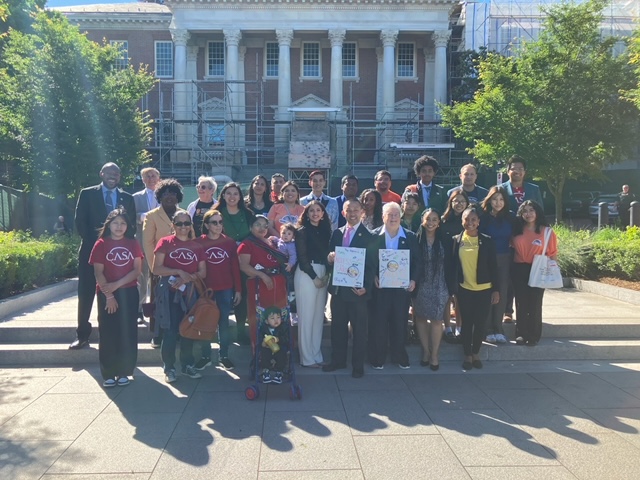Baltimore Sun
December 17, 2014
By Meredith Cohn
Need health insurance Jan. 1, enroll by Dec. 18
A day before the deadline to sign up on the Maryland exchange for health insurance that would start Jan. 1, thousands of residents risk losing their subsidies temporarily because they have not re-enrolled.
Yet a month into this year’s enrollment period, the exchange is running smoothly and already has signed up more than 100,000 new and returning customers, officials said Tuesday. Last year’s rollout of the exchange was plagued by technological problems that made it difficult for people to sign up.
“Technically, things are going much better on the exchange than last year, and as a result, many more people are signing up,” said Dr. Peter Beilenson, CEO of Evergreen Health Co-op. “Still, I don’t think awareness among consumers is where it should be regarding the impending deadline for Jan. 1 coverage.”
Everyone who bought plans last year will be re-enrolled automatically in the same or similar plans, but to keep their federal subsidies, people must sign up again through the exchange. About 80 percent of people in private plans, or about 50,000 people, received subsidies.
Earlier this month, exchange officials said only about a quarter of those 50,000 people had returned to the exchange, though it’s unknown how many still need the insurance and how many got coverage elsewhere. The exhange did not provide updated figures Tuesday.
The exchange has a more modest marketing budget this year, so it’s not clear whether everyone has heard that Thursday is the deadline to enroll for insurance beginning Jan. 1 and to renew subsidies.
People still can enroll and qualify for subsidies until Feb. 15 with insurance that wouldn’t start until after the new year begins.
In general, officials said during a meeting of the exchange board Tuesday that they were pleased with the system’s performance and their outreach efforts during open enrollment.
Last year, the exchange crashed on its first day and limped through an extended open enrollment to sign up about 300,000 people in private and public plans, including close to 100,000 who were automatically moved from a bare-bones state health plan into Medicaid, the federal-state program for low-income people.
More people who had a change in job or family status signed up over the summer and fall, as did people who qualify for Medicaid, bringing the total to more than 450,000 people, though at least 10,000 stopped paying their premiums, effectively giving up their coverage, before the second open enrollment got underway.
“It’s been a totally different experience this year,” said Dr. Joshua M. Sharfstein, state health secretary and exchange board chairman. “I am so grateful to all the people in our state who have worked together for this success.”
Sharfstein and two other architects of the exchange, state Information Technology Secretary Isabel FitzGerald and Lt. Gov. Anthony G. Brown, are leaving their posts as the Democratic administration of Gov. Martin O’Malley winds down and Gov.-elect Larry Hogan, a Republican, comes into office.
For now, Darrell J. Gaskin, associate professor of health economics at the Johns Hopkins Bloomberg School of Public Health, will serve as chairman of the exchange board.
Eventually, Hogan will appoint most members of the board. He criticized the O’Malley administration and Brown for the poor performance of the exchange during his campaign and recently refused to rule out cuts to the Medicaid program to help shore up state finances.
About 60 percent of those enrolled so far during open enrollment, which ends Feb. 15, signed up for private policies. By contrast, the majority of people who enrolled last year qualified for Medicaid, vastly expanding the program to about 1.2 million people.
Hogan was also critical of exchange spending. The board has awarded more than $350 million in contracts, though officials haven’t said how much of that has been spent. And new contracts continue to be awarded. For example, the board approved $5 million Tuesday to keep so-called private navigator groups working through open enrollment.
One of those groups, HealthCare Access Maryland, said it was well ahead of enrollment compared with last year.
Kathleen Westcoat, the organization’s president and CEO, said more and earlier enrollment fairs as well as additional office fronts and weekend and evening hours have contributed to the gains.
Also, she said, “word has gotten out that the website works.”
Across the country, about 2.5 million people have signed up for health insurance on the federal exchange, used by 36 states.
State details payments to former contractor on botched health exchange
Nationally, the deadline for coverage in January was Dec. 15, and, over the weekend, many people who waited could not get through to the call center. Officials said Tuesday they will be given extra time to enroll. Others will be enrolled for coverage in February or after.
Government data shows that since 2010 when the health care law passed, the share of Americans younger than 65 without insurance dropped by a third to 12.9 percent.
The Congressional Budget Office estimated earlier this year that 13 million would sign up for coverage in 2015, though the Obama administration estimated more recently that 9.1 million would enroll.
The health policy and advisory firm Avalere estimated Tuesday that about 16 percent may drop coverage, which is higher than government projections.
The firm said the state and federal exchanges still are having trouble attracting younger, healthy people, those with high incomes and not eligible for subsidies, and Spanish speakers. Avalere also cites polls showing many people do not know it’s open enrollment and there are penalties for not gaining coverage.
Advocates of the exchange say they will continue to seek avenues to reach people using social and traditional media, as well as word of mouth.
“With a fully functioning website, call center and in-person assistance, over 100,000 Marylanders have enrolled since Nov. 15,” said Vincent DeMarco, president of the Maryland Health Care For All Coalition. “Along with faith leaders and other community leaders across the state, we will continue to work with the Maryland Health Connection to enroll all eligible Marylanders.”
Tribune Newspapers contributed to this article.
To sign up
•The deadline for coverage to begin Jan. 1 through the Maryland Health Exchange is Dec. 18
•To enroll online or get information about events, go to marylandhealthconnection.gov
•To enroll over the phone or ask questions, dial 855-642-8572
•Open enrollment continues until Feb. 15.
Last modified: December 17, 2014


